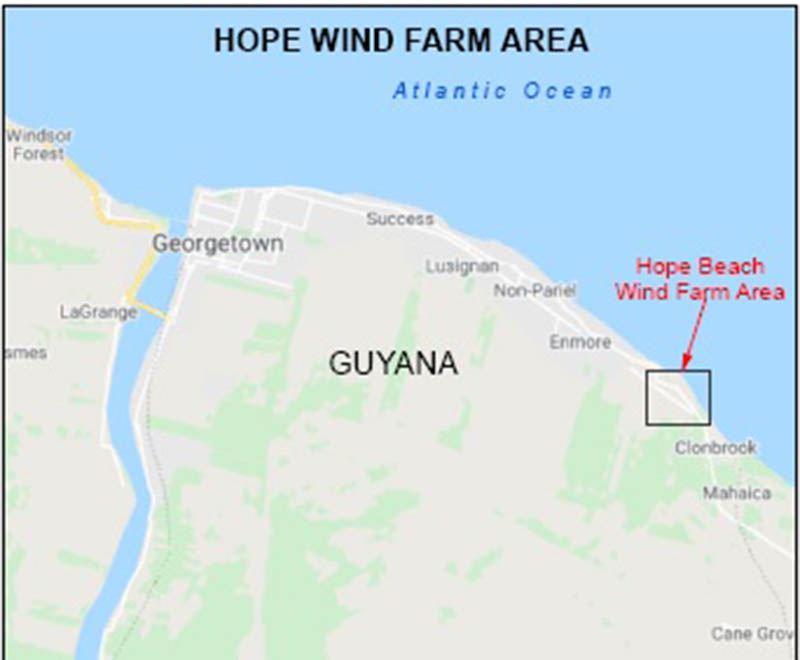The Environmental and Social Impact Assessment (ESIA) for the Hope Wind Farm project on the East Coast Demerara has been approved.
The Hope Wind Farm will be the first large scale wind energy facility to be constructed in Guyana and the approval of the impact assessment paves the way for the issuance of an environmental permit for the project.
In September of 2018, Hope Energy Development (HED) submitted an application for an environmental authorisation to construct and operate a wind farm. The project proposes the construction of four wind turbines along the coast at Hope Beach, outboard of the Lowland/Hope to Ann’s Grove Villages and two additional wind turbines in the Chapman’s Grove area, 2km further to the South East of Hope Beach.
According to a public notice on the website of the Environmental Protection Agency (EPA) the project’s EIA fully complied with the Terms and Scope outlined by the agency in consideration of the submissions made by members of the public and adequately address the views and feedback expressed by members of the public and other stakeholders during consultations and the statutory 60-day public review period last year.
The Environmental Assessment Board (EAB) approved the project’s ESIA, which the EPA says has adequately assessed the potential adverse effects or risks posed by the project, and the mitigation plan proposes appropriate and adequate measures to minimize the aforementioned.
During the initial studies, the HED discovered that wind power is stronger during the evening hours and at its lowest during the day. A decision was then taken to incorporate a solar element into the project as well. The solar farm is expected to provide 20 megawatts of power.
The approved ESIA states that while wind farms present a risk of harm to residents due to wind turbines falling over or parts of rotor blades breaking off and being thrown some distance, they would be complying with the World Bank environmental and safety guidelines for the wind industry which advises a minimum safety offset distance of 1.5 times the maximum height of a wind turbine in order to achieve acceptable levels of safety risk.
The wind farm is slated to generate over 50GWh of electricity per year that will be delivered to the Guyana Power and Light’s (GPL) grid and will provide an alternative to Guyana’s reliance on fossil fuels for power generation, and its associated emission of carbon dioxide and other pollutants. The power purchase agreement with the Guyana Power and Light (GPL) but once this is done, it would mark the end of the feasibility aspect of the project. The plant is planned for commissioning some 18 to 24 months following the signing of the PPA, and may occur as early as the third quarter of 2023.
HED is working along with three partners to implement the project. The partners are, SPI (Denmark and Colombia), who has more than 10 years of experience in Solar and Wind investments in Europe and will provide key technical support from Wind and solar networks, financing & project structure, Innova Energy Ltd, from Trinidad and Tobago and SPI’s partner in Southern Caribbean and will function as the Project General Manager and a key investor and Total Energy Solutions Inc, Guyana.
The updated ESIA can be found on the EPA’s website.





